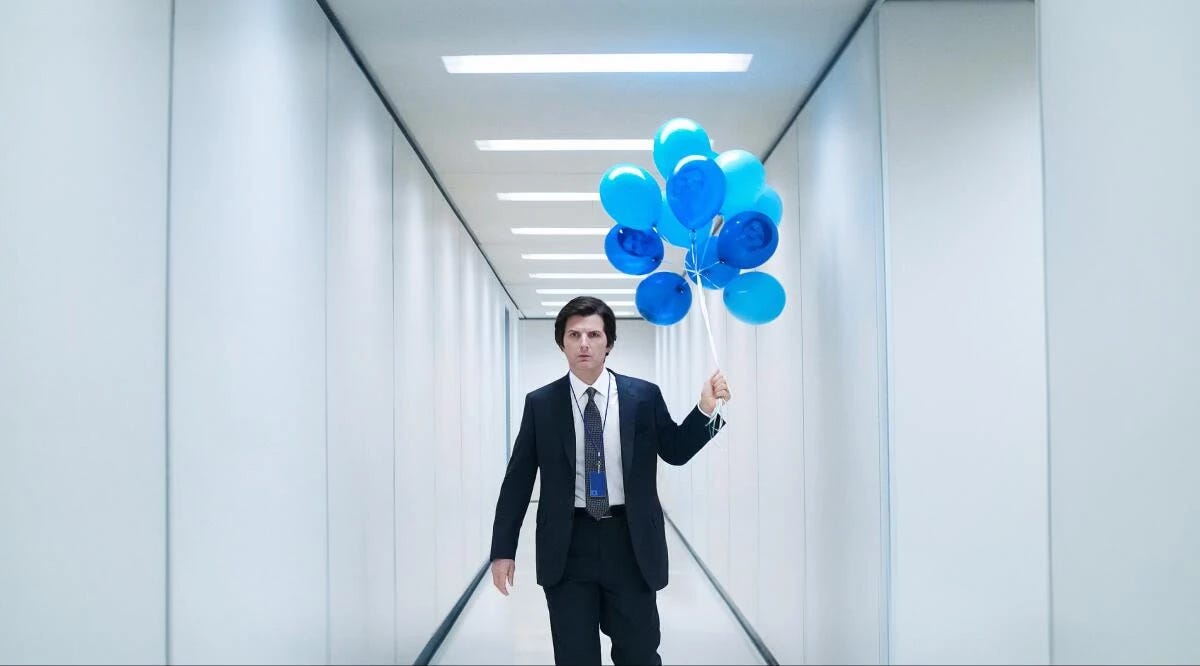This is a weekly examination of each new “Severance” episode. It contains spoilers, so if you haven’t watched, come back when you have.
Given that it’s been nearly three years since the last “Severance” episode, I hope a lot of folks got the chance to go back and at least watch the S1 finale, which is arguably the best episode of “Severance” in its young existence.
About that:
We all have different opinions and critical takes on the shows we watch and for me, back when “Severance” first premiered (February of 2022), a studio head was (allegedly) reading a script I wrote about a complicated pre-apocalyptic world and I was told by this person (and others as well) that I probably shouldn’t watch “Severance,” seen then as a complicated, mysterious psychological thriller, lest I be influenced.
No writer wants to be influenced. And the funny thing to me was that the pilot I wrote had absolutely no connection, even distantly, to the concepts in “Severance.” (I guess when you talk about “complicated worlds” everything that’s not normal gets put in the same bin).
Besides, not watching wasn’t a problem anyway because I had only just started watching TV again, after a couple of pandemic/development deal years of focusing on staying alive and writing my own work. So skipping “Severance” was easy.
When I finally got around to watching that first season of “Severance,” the hype was very real. If you’ve ever gone to the movie theater to see a heavily buzzed-about film and walked out a little underwhelmed, then you know how I was feeling.
Expectations are road blocks to enjoyment.
I liked the stylized nature of “Severance” in the first few episodes I was watching — the heavy quirk of the Lumon experience, the acting styles, the remote location above ground, the endless hallways underground in the work world. All of it was intriguing but I always had nagging questions about the actual concept of the series, where a surgical procedure severs non-work, real-world memories from work memories in the bizarre, what-is-actually-happening-down-here world of Lumon.
In the case of main character Mark S. (played exceptionally well by Adam Scott), the explanation was pretty easy to understand: Mark had a traumatic experience — his wife died; he tried to go back to work as a teacher but flamed out, depressed, and just wanted to stop being hounded by the depression, so he opted to to through the procedure where your brain memories are “severed” — emotional exhale — and now you work for Lumon; when done with your mundane tasks that are unexplained, you can go home at night.
Once you take the elevator down to Lumon, you are transformed and your “outie” — living live in the real world, transforms to your “innie” — working at Lumon. In essence, you are two different people and once you go down or come up the elevator, you are transformed and re-enter those new worlds.
Simple enough, but…and?
It’s not that I didn’t understand, I just thought (and to a lesser degree still do) that the premise was under-developed. But I also understand that “under-developed” could be/probably is on purpose, and that this “Severed” world will be explained more fully going forward. Like all series, this was the “opt-in or opt-out” moment, and I reluctantly kept watching.
In that process, I grew to like and appreciate “Severance” much more. Its weirdness was the point, the attraction, more so than a story or plot. Life at Lumon in the series is more interesting to me as a viewer than the real lives of the characters.
Of course that changed toward the ending of S1, and morphed into something much more intriguing in the finale. So, here I am, all in and hoping for more and better in S2.
Keep reading with a 7-day free trial
Subscribe to Tim Goodman / Bastard Machine to keep reading this post and get 7 days of free access to the full post archives.







